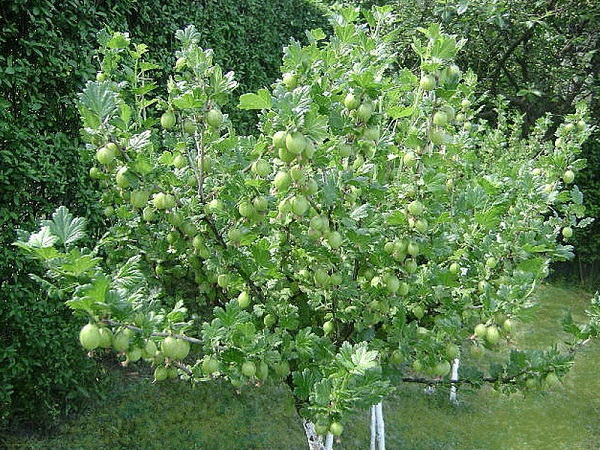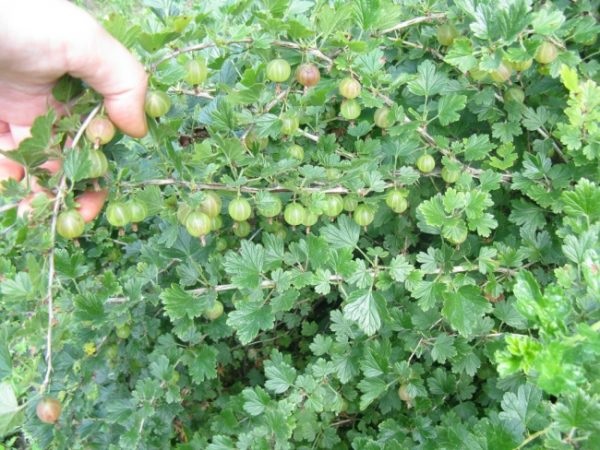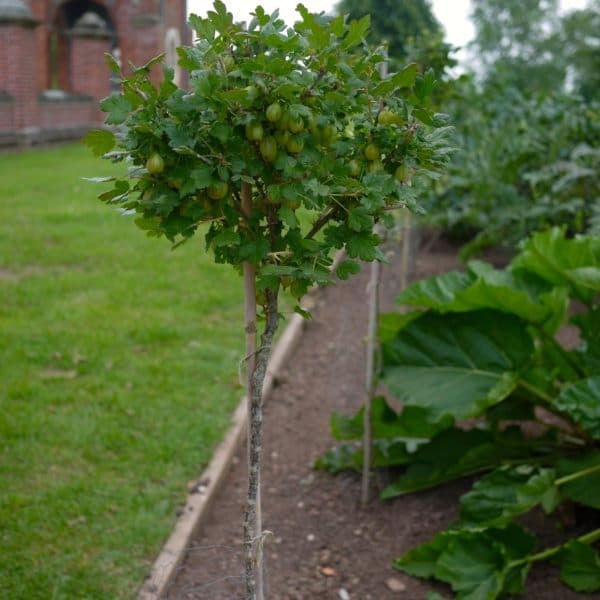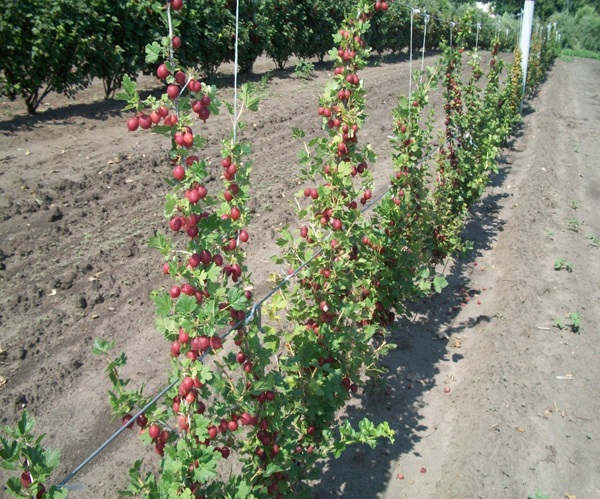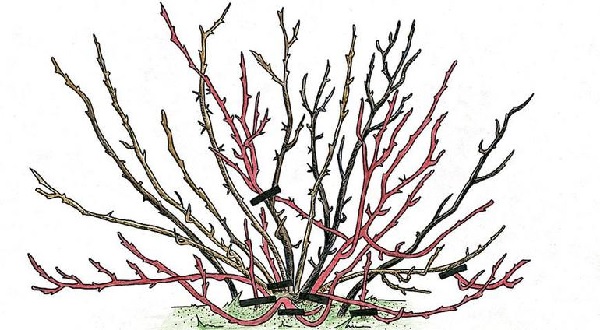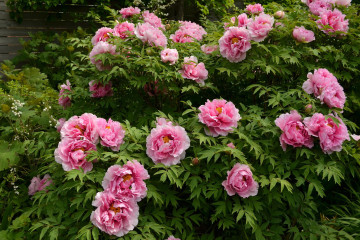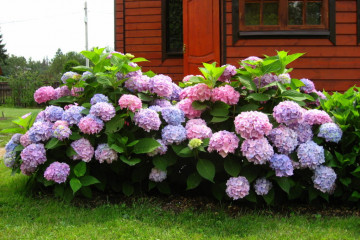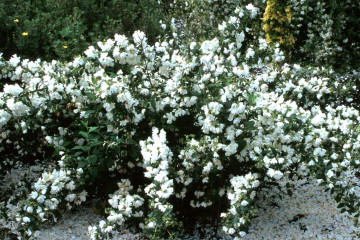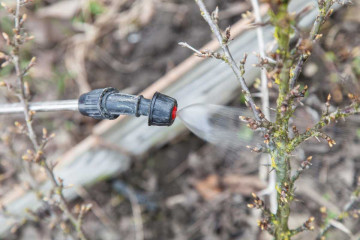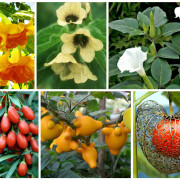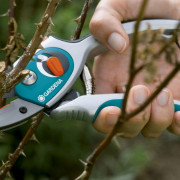Pruning gooseberries in spring, summer and fall
Content:
Many people believe that if there are no dry branches on a shrub, it grows normally, blooms on time and brings berries, then you can not pay attention to it. However, in fact, pruning gooseberries is a must; without it, the plant will not develop properly.
Why and what are the gooseberries cut for?
Gooseberries can produce a lot of shoots. But if this process is not controlled, the shrub will grow rapidly and will soon turn into thorny thickets with small sour fruits.
Reasons for pruning
It is important to figure out not only how to cut the gooseberry, but also why, when it needs to be done. The first reason is that the overgrown thorny thickets will clearly not decorate the site.
But also:
- with strong growth, the shoots receive less light and the berries become smaller;
- due to the plexus of branches, the risk of spreading diseases and the appearance of pests is higher;
- new shoots require more nutrients, but each next one receives less and less of them, and as a result they become weaker;
- if the branches are not pruned for a long time, they lengthen greatly, sink to the ground under their own weight, and after a while take root as layering.
As a result, gooseberries not only stop yielding, but become a dangerous neighbor, because of which diseases and pests can continue to spread throughout the garden. While timely pruning allows you to avoid all of this, if only you put a little effort into it.
When and how to form a gooseberry is what every gardener should know. The main purpose of such manipulations is not just getting rid of old or diseased branches, but the formation of such a bush in which shoots of different ages will coexist, both those at the peak of productivity and young ones.
Basic toolkit
Pruning a bush is in any case an injury to a plant, even if everything is done in compliance with all the rules of agricultural technology. Therefore, it is very important to select the appropriate gardening tools.
You definitely need to take a very sharp garden knife, which will be used to clean out irregularities in the cuts (and they inevitably remain), as well as a high-quality pruner. More solid tools will not be needed, since gooseberry branches are not very thick. Old bushes are an exception - thick branches can develop in their depths, for which you will need a special lopper.
We also need to take care of the means of protection. Firstly, these are mittens, since we are talking about a thorny bush. Secondly, you need protective plastic glasses and a respirator. It is worth doing all the trimming work only in them, so that dust does not get into the eyes and respiratory tract, and does not provoke conjunctivitis and allergic reactions.
The correct structure of a gooseberry bush
To find out how to properly cut the gooseberry, you need to understand its structure. The plant is a multi-stemmed shrub that most often grows up to 150 cm in height.
The base of the bush is called the root collar - shoots covered with thorns are formed from the buds formed here. In fairly old plants, the root collar can grow strongly, reaching a solid size over time.
The gooseberry root system depends on how the bush was grown. If from a seed, then the shrub will have a taproot. If the bushes were obtained vegetatively, that is, propagation was carried out by cuttings or layering, the system will consist of adventitious roots.
The ability of a gooseberry to regenerate shoots depends on the variety. For example, the varieties Varshavsky and Houghton are quickly recovering. The latter can give up to 25-30 new branches on a six-year-old bush. But, for example, the Date variety gives fewer shoots.
In the second year after planting the bush, the root shoots give growth. They can be either short or long. There are more fruit buds on short growths, which over time, after 2-3 years, turn into so-called fruits. The latter usually live for 3-4 years, then dry up, but it is not necessary to cut them off, they fall off themselves. Because of this, the yield of seven- or eight-year-old branches is greatly reduced, and it is customary to cut them.
Bush formation
For proper pruning of the bush, you should use step-by-step instructions that take into account the age of the plant.
Annual bush
How to prune gooseberries:
- the first pruning is carried out immediately after planting the seedling in the ground;
- the plant is carefully examined and all weak shoots are removed, as well as those that grow horizontally;
- the remaining branches are cut so that 4-5 buds remain, counting from the ground level.
Biennial
To get a good harvest in the future, you need to shorten the grown shoots by about a third.
As for zero shoots, a maximum of 8 pieces should remain together with last year's ones.
Three-year
Pruning is carried out according to the same principles as in previous years. That is, the shoots that have appeared in the current year are shortened.
Of the zero shoots, four should remain.
4th and subsequent years
It is necessary to prune in such a way as to get 20 sufficiently powerful branches of different ages by the fifth year.
In the future, one principle is observed - old and diseased branches are removed. Those that have already outlived their time differ from the rest with a darker bark.
Anti-aging pruning
It will be necessary to update the shrub by the time it reaches the age of 7-8 years. Then rejuvenating pruning is carried out, in which only the most developed and healthy branches are left - there should be about 2/3 of them. You will have to remove not only weak or damaged, but even simply twisted or too old branches. In addition, the ones that are left still need to be cut off the top.
Pruning a neglected bush
If the bush has already been brought to a neglected state, the situation cannot be corrected in one pruning. Depending on the specific situation, this can take 2-4 years.
In the first pruning, you need to try to at least thin out the shrub as much as possible. If it bears fruit, then it will be necessary to completely cut off the dried and non-viable tops from healthy branches - approximately to the side branch.
Non-standard methods of pruning gooseberry bushes
The formation of gooseberries can also be carried out in non-standard ways - standard and trellis. Each of them has its own characteristics.
Stamper
The task of such pruning is to transform the shrub into a kind of tree with a long stem and a spherical crown. This method has three advantages - an attractive appearance of the bush, its compactness (it does not grow and does not take up much space) and easier harvesting.
In order to form a stem, you need to choose the strongest shoot from those that grow vertically, without deviations to the sides, and the rest will have to be removed. This also applies to lateral shoots growing to the level of formation of the "crown". Typically, the trunk height is about a meter, and any lateral shoots that appear should be removed regularly.
After the removal of the lower shoots, the formation is carried out according to the traditional scheme. Every year, only the strongest and most viable shoots are left - up to 5 pieces, and last year's are shortened by half. Shoots are also cut off, which, during growth, are turned into the bush.
To prevent new shoots from appearing at the base of the trunk, you can mulch the soil around the bush. For this, crushed bark is used. It looks beautiful, and at the same time prevents the emergence of new growth.
The standard form has a serious flaw. It will no longer be possible to rejuvenate such a bush, so its life expectancy is reduced to 10-12 years. A way out of the situation will be the arrangement of the cycle of boles on the site - that is, every year to choose new plants for the formation of such a bush, and allow the old ones to grow.
It is also important to remember that boles have lower frost resistance, which requires additional care.
Shpalerny
Forming a gooseberry trellis bush is another interesting option. At one time, this method was considered fashionable, since it also looks very decorative. But the main thing is that at the same time, all fruitful branches receive good lighting, and access to fresh air.
For the trellis method, it is imperative to install supports and stretch three rows of wire on them, with the lowest one at a distance of 50 cm from the ground, and the highest one 100 cm.
When pruning is carried out, they try to make sure that new shoots grow horizontally - 3-5 of them are chosen the healthiest ones, they are again tied to a wire, and the rest are cut off. But the central shoots are greatly shortened, while the zero ones, due to which the bush thickens, is cut off completely.
Seasonal pruning of the bush
The features of pruning depend on the time of year, below will be considered the nuances of seasonal work.
Spring
This shrub wakes up earlier than others in the spring, so it is very important not to miss the dates. As soon as it gets warmer enough so that you can safely work in the garden, you should start such work.
How to prune gooseberries at this time of the year is often a question of interest to novice gardeners. In the spring, you just need to remove dry and damaged shoots, including blackened branches - their appearance indicates that they have suffered from powdery mildew.
Summer
Pruning gooseberries in the summer is necessary in order to increase their yield.
There is nothing difficult in it, since the main task is to shorten young green shoots. No more than seven leaves are left on them, and the crown is carefully removed.
In August, gardeners are advised to cut out poorly developing zero shoots, since they only waste the plant's resources.
Autumn
If spring pruning has not been carried out, then autumn pruning is mandatory. It is recommended to hold it at the end of October.
In autumn, unlike summer pruning, you need to remove old branches, as well as the weakest of the young. Remove damaged shoots and those that grow deeper into the bush. It is recommended to cut off zero shoots by about a quarter of their length.
In order to understand how strong a young branch is, you need to look at its tip. If it remains very thin by the end of the season, such a shoot will still not yield the next year. As a result, after all the manipulations, the bush turns out to be as if clarified, since the branches will no longer be so thick.
To get a good harvest, it is not enough just to water the plant correctly or to prune it on time. It is also necessary to feed the plant after removing the shoots so that the bushes receive more nutrients. This is done both in summer and autumn. The latter procedure allows the plant to tolerate frost better. If all these rules are observed, the gooseberry will become more resistant to negative factors, and the yield will increase significantly.
